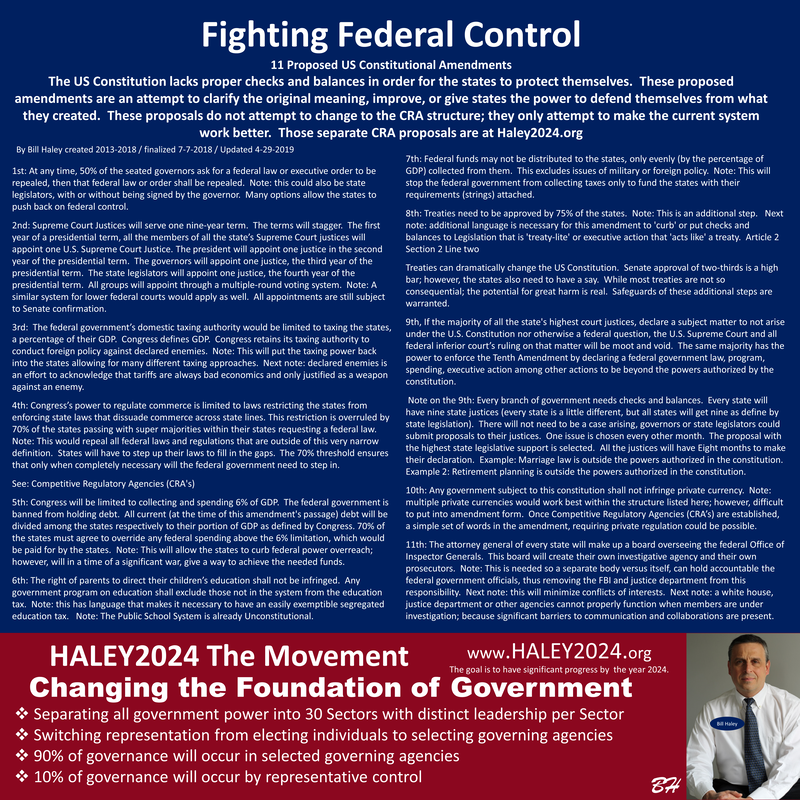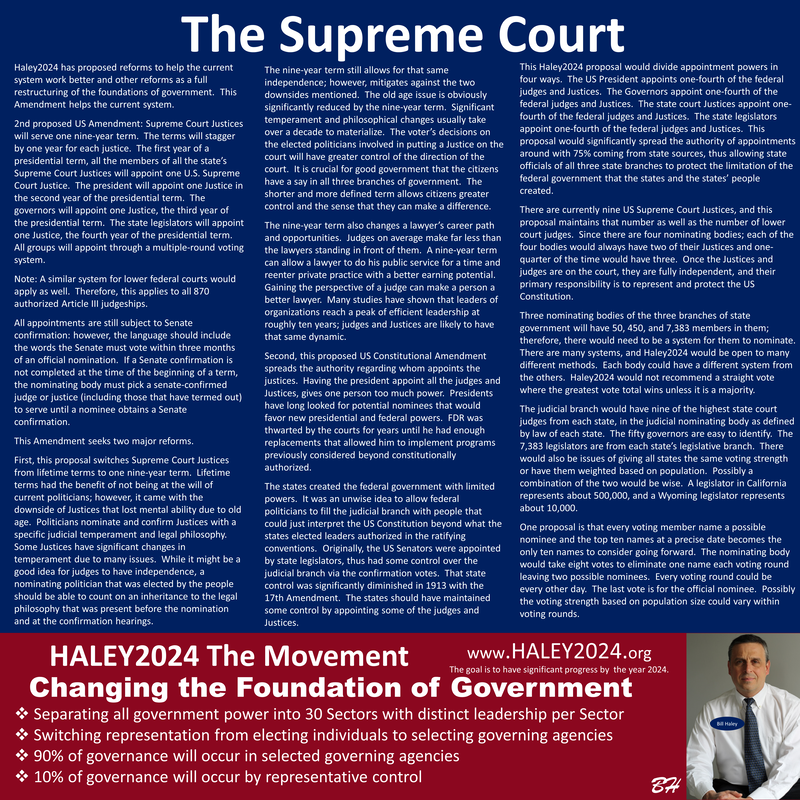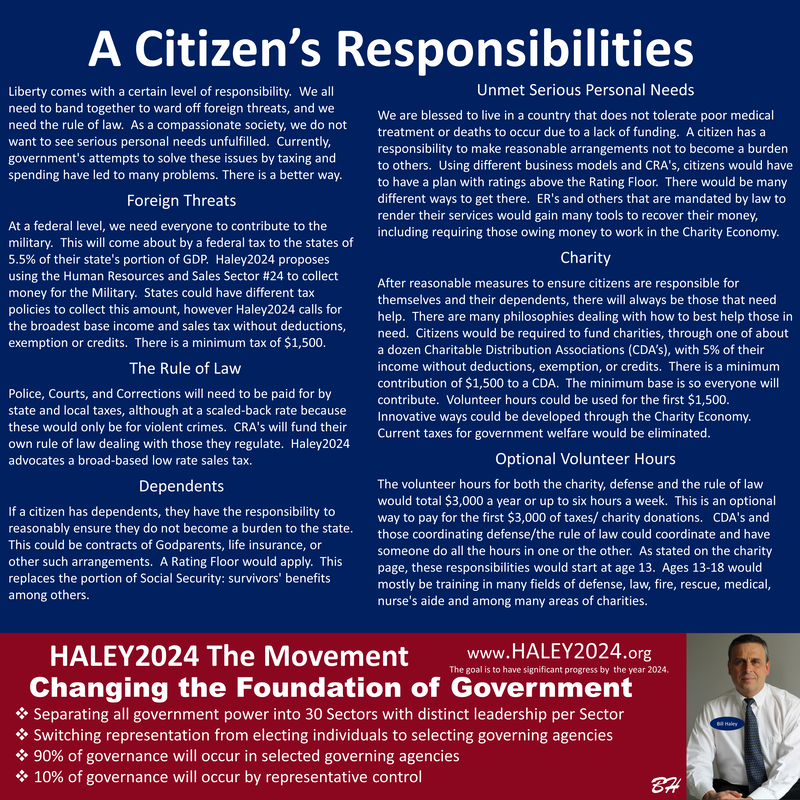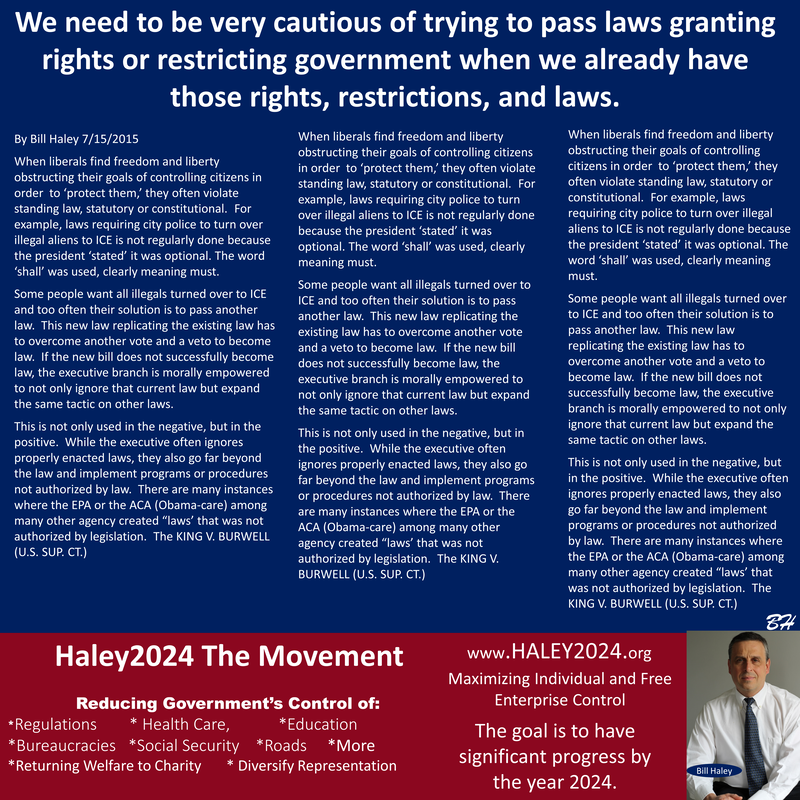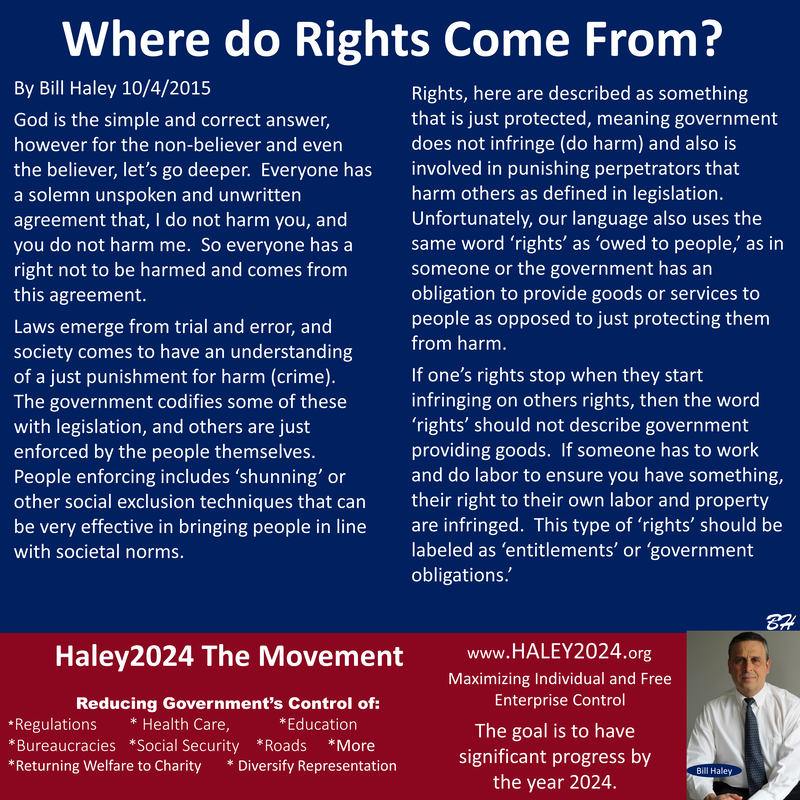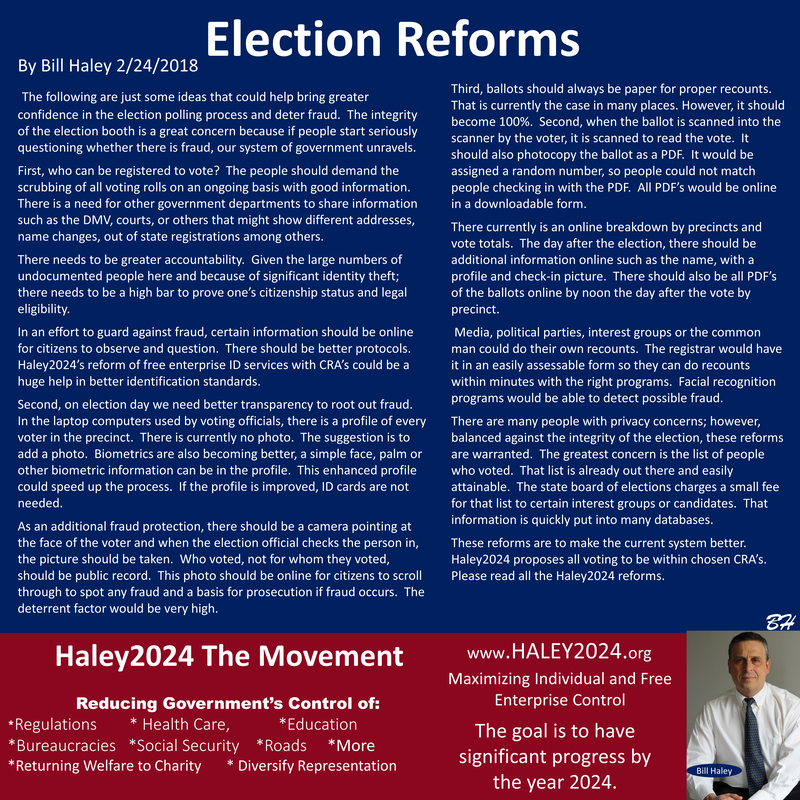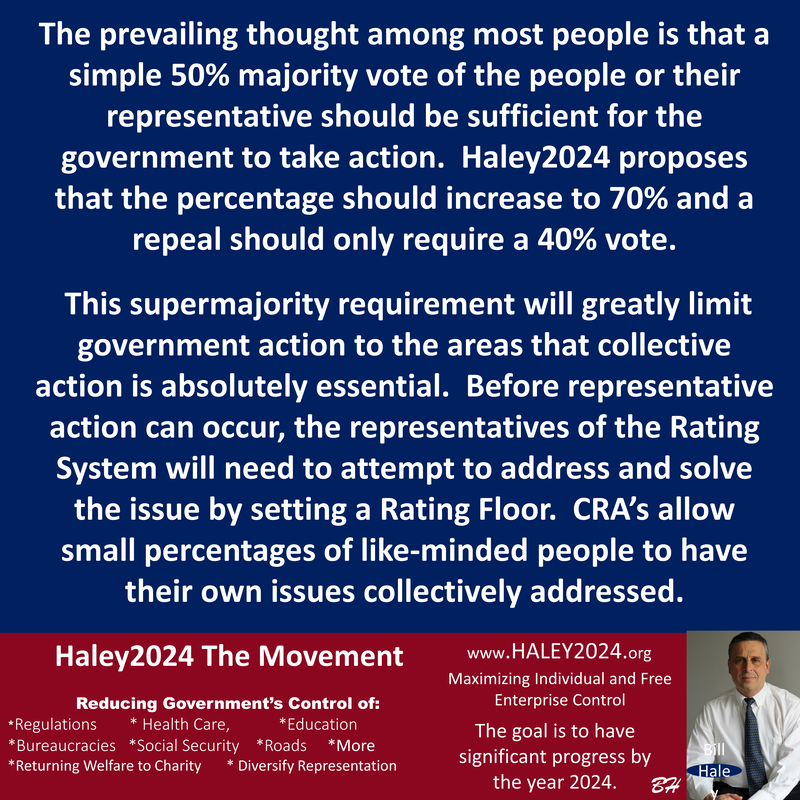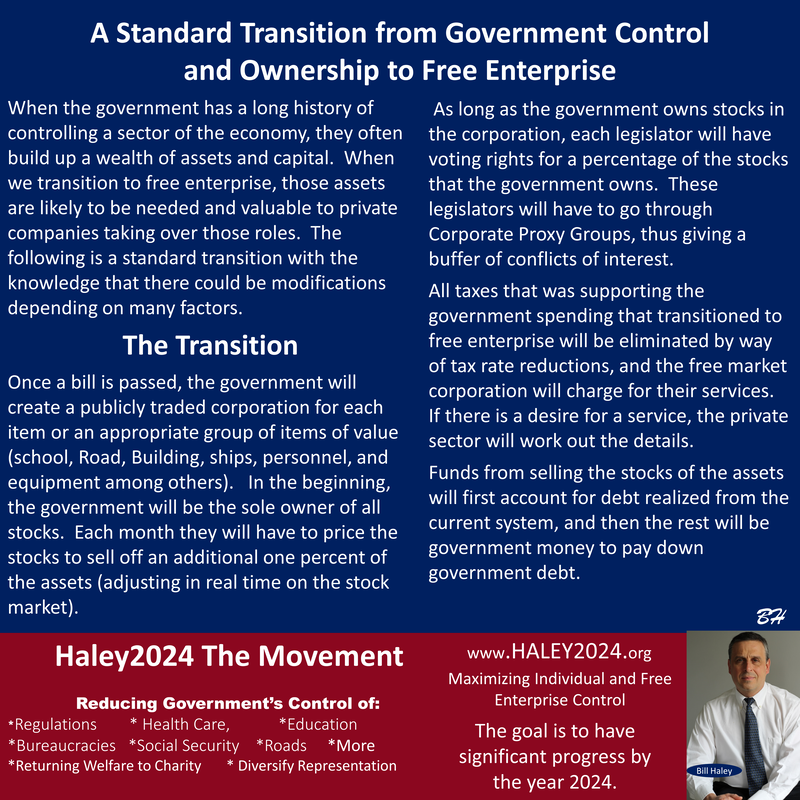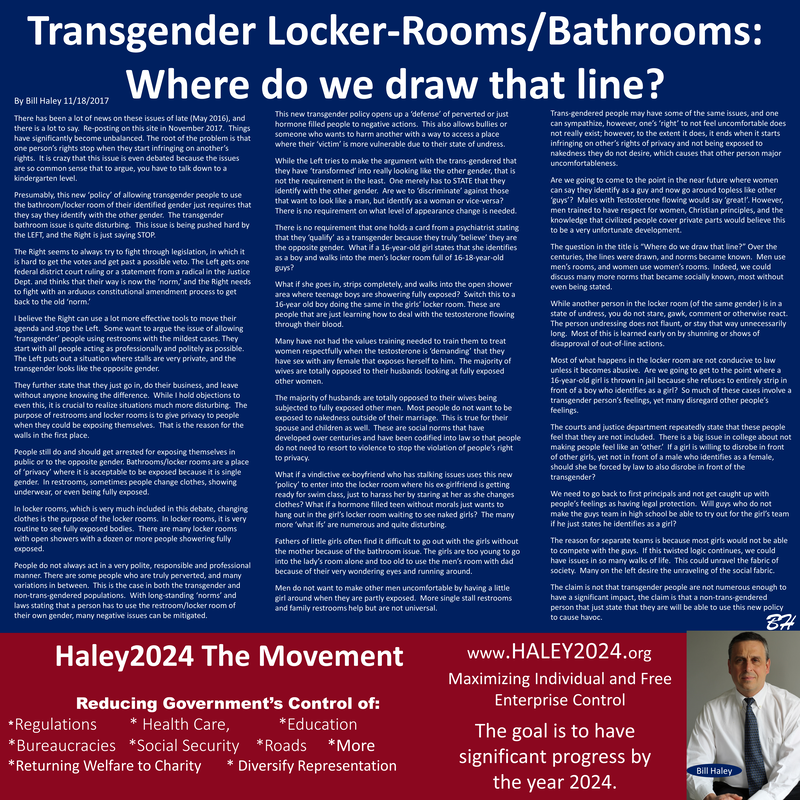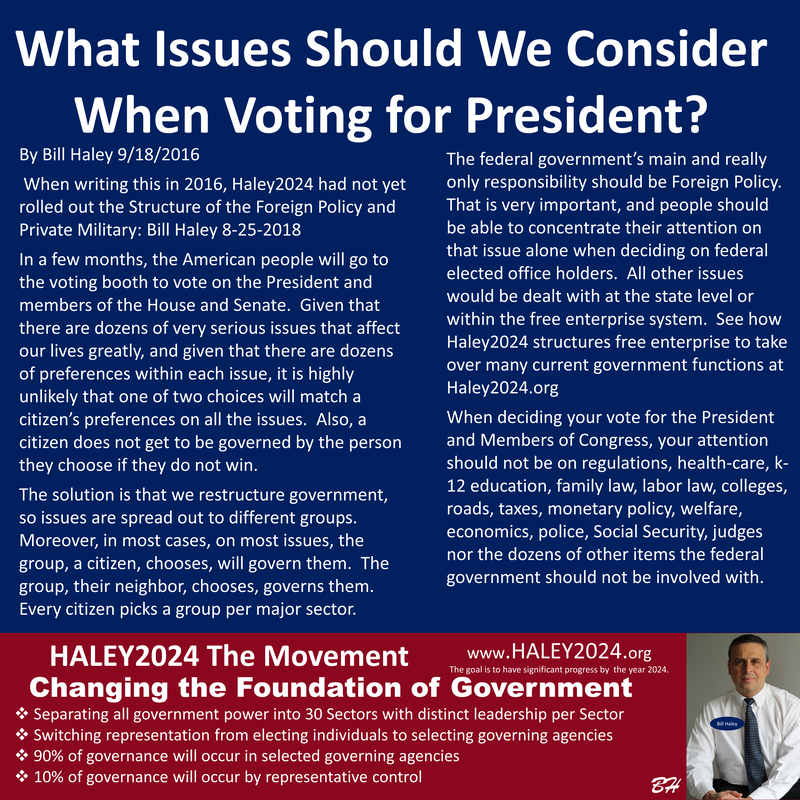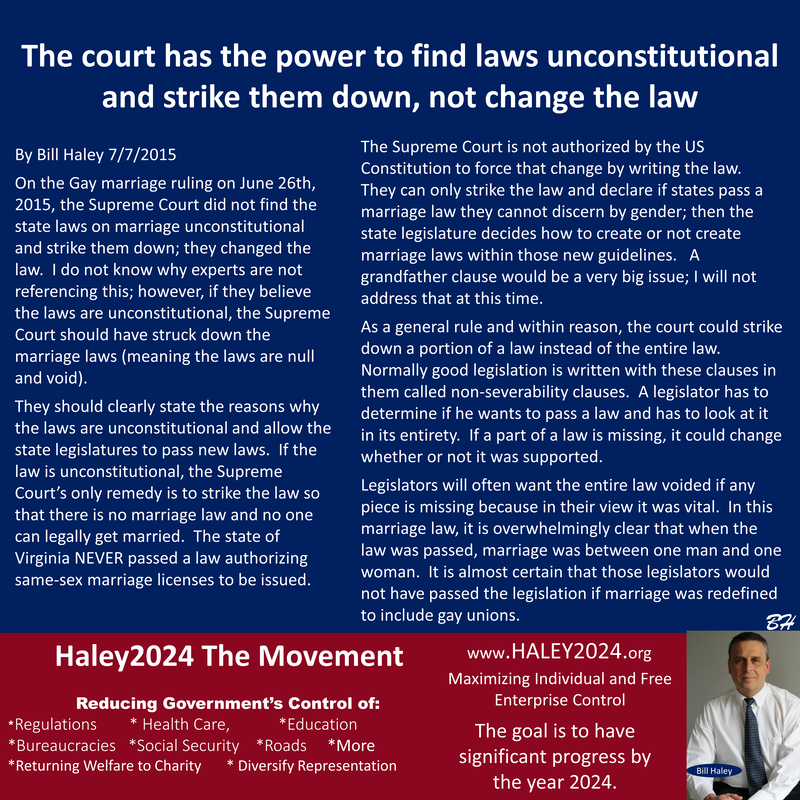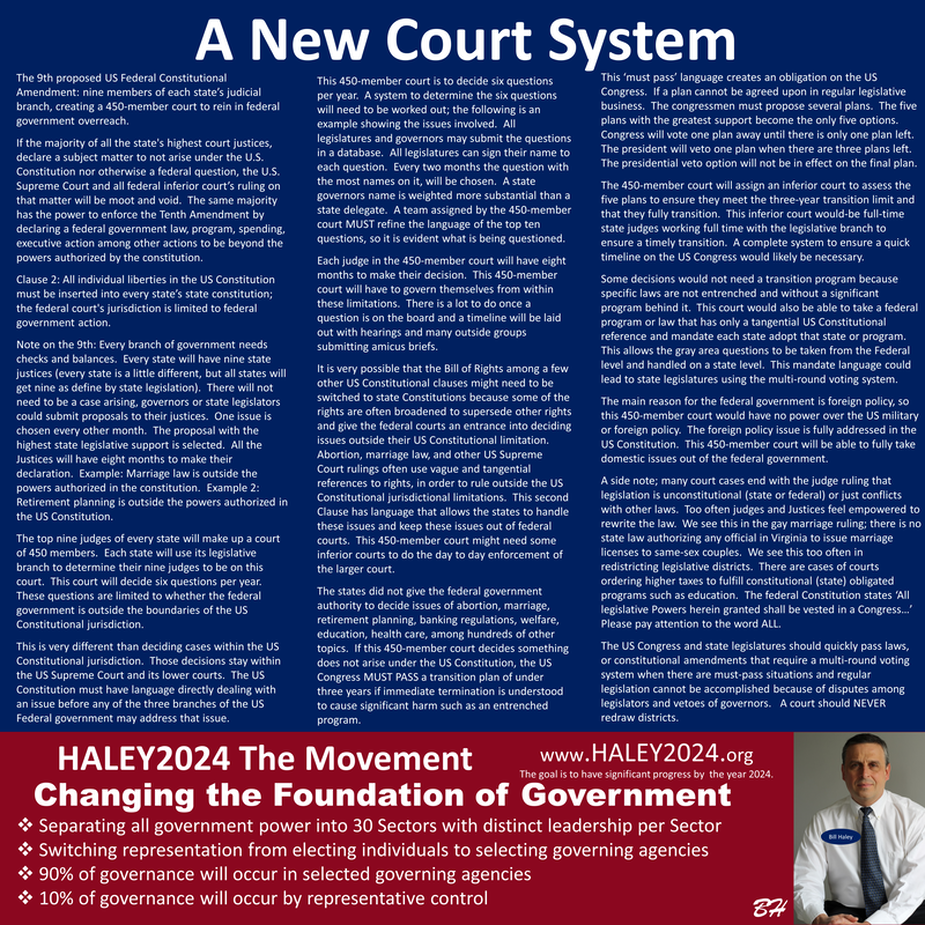|
The 9th proposed US Federal Constitutional Amendment:
If the majority of all the state's highest court justices, declare a subject matter to not arise under the U.S. Constitution nor otherwise a federal question, the U.S. Supreme Court and all federal inferior court’s ruling on that matter will be moot and void. The same majority has the power to enforce the Tenth Amendment by declaring a federal government law, program, spending, executive action among other actions to be beyond the powers authorized by the constitution. Clause 2: All individual liberties in the US Constitution must be inserted into every state’s state constitution; the federal court's jurisdiction is limited to federal government action. |
|
Note on the 9th: Every branch of government needs checks and balances. Every state will have nine state justices (every state is a little different, but all states will get nine as define by state legislation). There will not need to be a case arising, governors or state legislators could submit proposals to their justices. One issue is chosen every other month. The proposal with the highest state legislative support is selected. All the Justices will have eight months to make their declaration. Example: Marriage law is outside the powers authorized in the constitution. Example 2: Retirement planning is outside the powers authorized in the US Constitution.
|
|
The top nine judges of every state will make up a court of 450 members. Each state will use its legislative branch to determine their nine judges to be on this court. This court will decide six questions per year. These questions are limited to whether the federal government is outside the boundaries of the US Constitutional jurisdiction.
This is very different than deciding cases within the US Constitutional jurisdiction. Those decisions stay within the US Supreme Court and its lower courts. The US Constitution must have language directly dealing with an issue before any of the three branches of the US Federal government may address that issue. |
|
This 450-member court is to decide six questions per year. A system to determine the six questions will need to be worked out; the following is an example showing the issues involved. All legislatures and governors may submit the questions in a database. All legislatures can sign their name to each question. Every two months the question with the most names on it, will be chosen. A state governors name is weighted more substantial than a state delegate. A team assigned by the 450-member court MUST refine the language of the top ten questions, so it is evident what is being questioned.
|
|
Each judge in the 450-member court will have eight months to make their decision. This 450-member court will have to govern themselves from within these limitations. There is a lot to do once a question is on the board and a timeline will be laid out with hearings and many outside groups submitting amicus briefs.
|
|
It is very possible that the Bill of Rights among a few other US Constitutional clauses might need to be switched to state Constitutions because some of the rights are often broadened to supersede other rights and give the federal courts an entrance into deciding issues outside their US Constitutional limitation. Abortion, marriage law, and other US Supreme Court rulings often use vague and tangential references to rights, in order to rule outside the US Constitutional jurisdictional limitations. This second Clause has language that allows the states to handle these issues and keep these issues out of federal courts. This 450-member court might need some inferior courts to do the day to day enforcement of the larger court.
|
|
The states did not give the federal government authority to decide issues of abortion, marriage, retirement planning, banking regulations, welfare, education, health care, among hundreds of other topics. If this 450-member court decides something does not arise under the US Constitution, the US Congress MUST PASS a transition plan of under three years if immediate termination is understood to cause significant harm such as an entrenched program.
|
|
This ‘must pass’ language creates an obligation on the US Congress. If a plan cannot be agreed upon in regular legislative business. The congressmen must propose several plans. The five plans with the greatest support become the only five options. Congress will vote one plan away until there is only one plan left. The president will veto one plan when there are three plans left. The presidential veto option will not be in effect on the final plan.
|
|
The 450-member court will assign an inferior court to assess the five plans to ensure they meet the three-year transition limit and that they fully transition. This inferior court would-be full-time state judges working full time with the legislative branch to ensure a timely transition. A complete system to ensure a quick timeline on the US Congress would likely be necessary.
|
|
Some decisions would not need a transition program because specific laws are not entrenched and without a significant program behind it. This court would also be able to take a federal program or law that has only a tangential US Constitutional reference and mandate each state adopt that state or program. This allows the gray area questions to be taken from the Federal level and handled on a state level. This mandate language could lead to state legislatures using the multi-round voting system.
|
|
The main reason for the federal government is foreign policy, so this 450-member court would have no power over the US military or foreign policy. The foreign policy issue is fully addressed in the US Constitution. This 450-member court will be able to fully take domestic issues out of the federal government.
|
|
A side note; many court cases end with the judge ruling that legislation is unconstitutional (state or federal) or just conflicts with other laws. Too often judges and Justices feel empowered to rewrite the law. We see this in the gay marriage ruling; there is no state law authorizing any official in Virginia to issue marriage licenses to same-sex couples.
|
|
We see this too often in redistricting legislative districts. There are cases of courts ordering higher taxes to fulfill constitutional (state) obligated programs such as education. The federal Constitution states ‘All legislative Powers herein granted shall be vested in a Congress…’ Please pay attention to the word ALL.
|
|
The US Congress and state legislatures should quickly pass laws, or constitutional amendments that require a multi-round voting system when there are must-pass situations and regular legislation cannot be accomplished because of disputes among legislators and vetoes of governors. A court should NEVER redraw districts.
|


